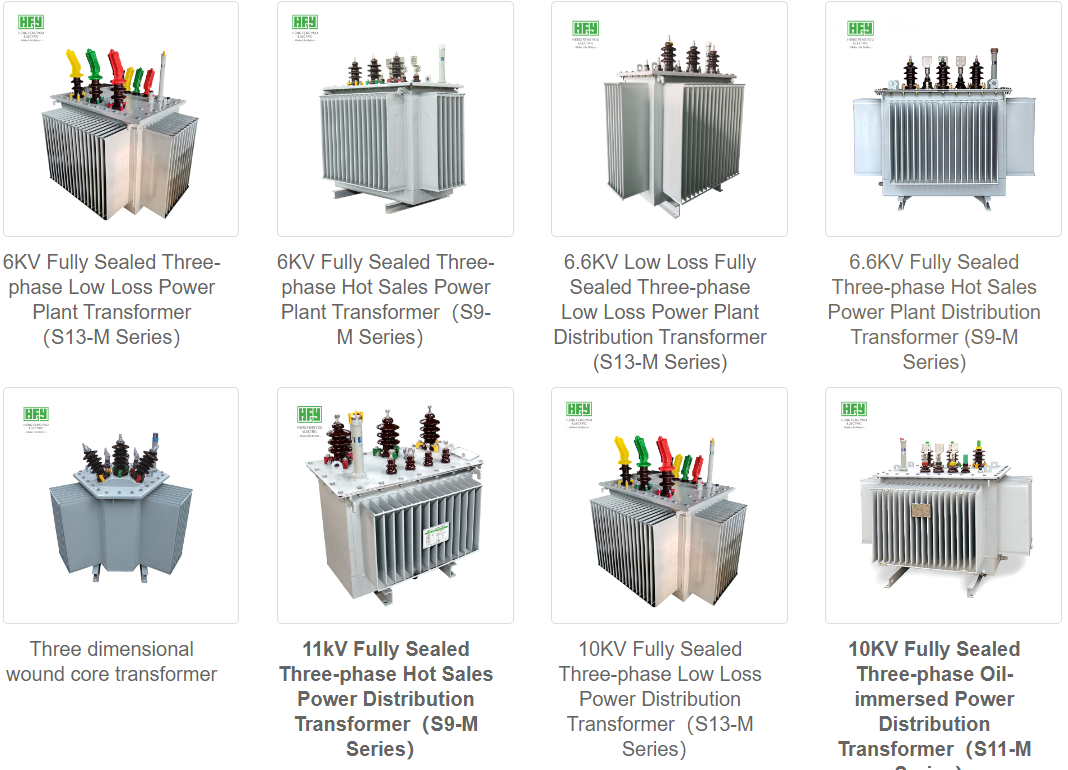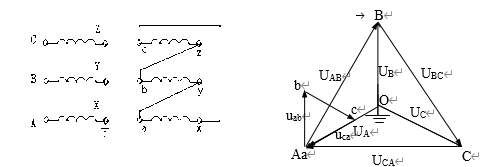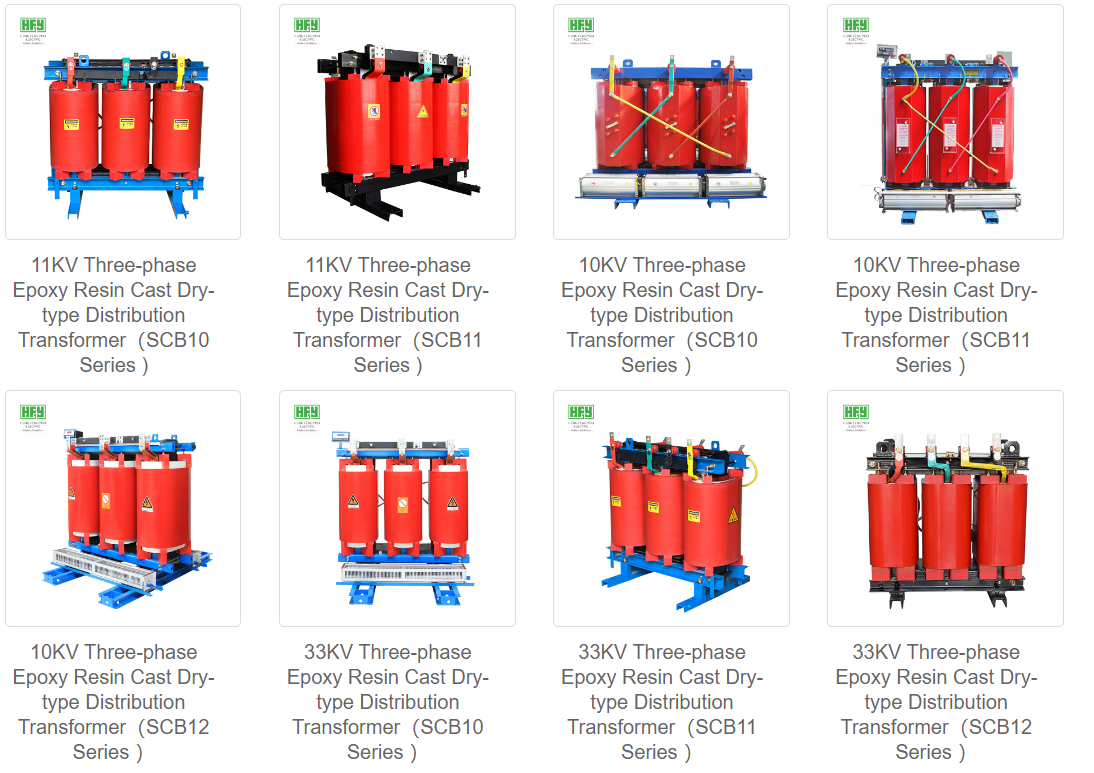Here comes the most comprehensive transformer knowledge
Writer: Hengfeng you electric Time:2023-05-08 views:times
1. What are the types of power transformers? What are the main components?
Answer: With the development of the power system, the demand for power transformers is increasing and there are various types. According to the number of phases, there are single-phase and three-phase; According to the position of the winding and iron core, there are inner iron core type and outer iron core type; According to cooling methods, there are dry self cooling, air cooling, forced oil circulation air cooling, and water cooling; According to the insulation level of the neutral point, there are fully insulated and semi insulated; According to the winding material, there are five levels of insulation, including A, E, B, F, and H. Different types of transformers have different requirements for operation; According to the voltage regulation method, it can be divided into on-load voltage regulation and no-load voltage regulation.
The main components of a general power transformer include: iron core, winding, sleeve, oil tank, conservator, radiator, and its auxiliary equipment.
2. What are the common types of wiring groups for transformer windings?
A dual coil three-phase transformer, consisting of high-voltage coils A-X, B-Y, C-Z, and low-voltage coils a-x, b-y, c-z, please connect to Y0/ Δ 11 wiring method and plot the potential vector diagram on the high and low voltage sides.
3. What is excitation inrush current? What is the reason for this?
Answer: Transformer excitation inrush current refers to the transient current generated in the winding of a transformer during full voltage charging.
When the residual magnetic flux in the iron core before the transformer is put into operation is in the same direction as the magnetic flux generated by the working voltage when the transformer is put into operation, its total magnetic flux far exceeds the saturated magnetic flux of the iron core, resulting in a large inrush current, with the maximum peak value reaching 6-8 times the rated current of the transformer. The excitation inrush current is related to factors such as the phase angle of the system voltage when the transformer is put into operation, the residual magnetic flux of the transformer core, and the impedance of the power system. The maximum inrush current occurs at the moment when the voltage passes through zero when the transformer is put into operation (at which time the magnetic flux is at its peak). The inrush current of transformers contains DC components and higher-order harmonic components, which decay over time. The decay time depends on the circuit resistance and reactance. Generally, it takes about 5-10 seconds for large capacity transformers and about 0.2 seconds for small capacity transformers.

4. Why do new or overhauled transformers need to undergo impact tests before they are officially put into operation? How many times does it usually impact?
Answer: The reasons for conducting impact tests on new or overhauled transformers before they are officially put into operation are as follows:
(1) Check whether the insulation strength of the transformer can withstand the impact of full voltage or switching overvoltage.
When the no-load transformer is opened, a very small excitation current is cut off, which may be forcibly extinguished before the excitation current reaches zero. Due to the current cutoff phenomenon of the circuit breaker, the transformer with inductive properties generates operating overvoltage. Its value is not only related to switch performance, transformer structure, etc., but also affects the grounding method of the transformer neutral point to cut off the overvoltage of the no-load transformer. Generally, transformers that are not grounded or grounded through arc suppression coils can have an overvoltage amplitude of 4 to 4.5 times the phase voltage, while transformers with directly grounded neutral points generally have an operating overvoltage amplitude of no more than 3 times the phase voltage. This is also the reason why the neutral point of the transformer that requires impulse testing is directly grounded.
(2) When the no-load transformer is put into operation, it will generate excitation inrush current, which can reach a value of 6-8 times the rated current. Due to the large amount of electricity generated by excitation inrush currents, conducting impact tests is to assess the mechanical strength of transformers and whether relay protection will malfunction under the action of large excitation inrush currents.
Number of impact tests:
Five impacts are required for the new transformer to be put into operation. The transformer after major repair needs to be impacted three times.
5. What are the conditions for parallel operation of transformers?
Answer: Parallel operation of transformers must meet the following three conditions:
(1) All transformers operating in parallel have equal transformation ratios;
⑵ All transformers operating in parallel have equal short-circuit voltage;
(3) The winding wiring groups of all transformers operating in parallel are the same;
Hengfengyou is a professional electrical company specializing in the production, manufacturing and sales of electrical distribution products, mainly engaged in the production and global sales of distribution transformers, rectifier transformers, electric furnace transformers, etc. We have provided OEM / ODM services for customers in Europe, America and the Middle East for 20 years. It can provide customized production of transformer core, transformer coil and transformer shell. Hengfengyou Electric will provide you with the best electrical product solutions. https://www.hengfengyou.com ; info@hengfengyou.com WhatsApp:+86158 5325 2696(Jack) +86158 5326 5269(Alisa)



